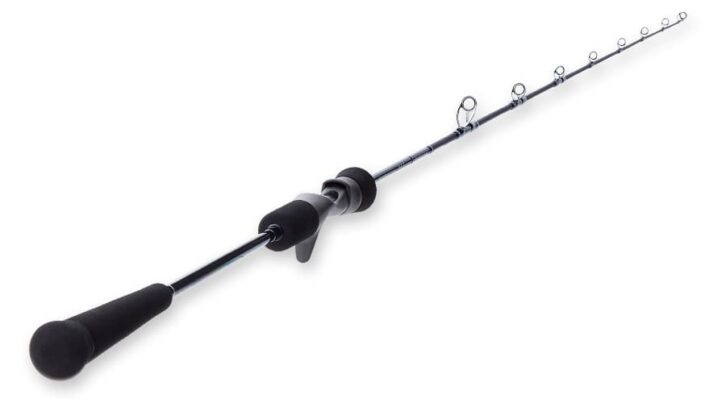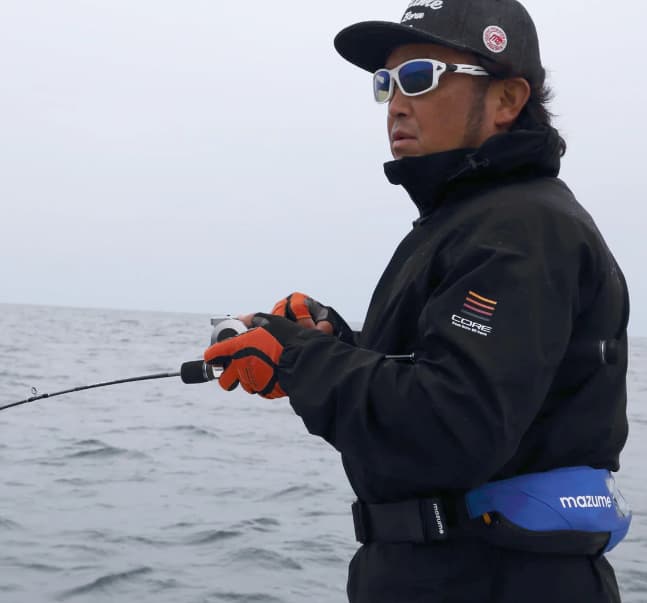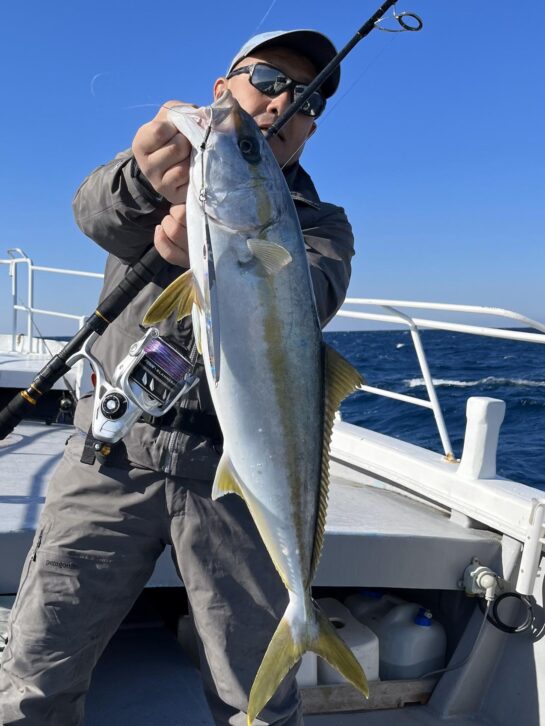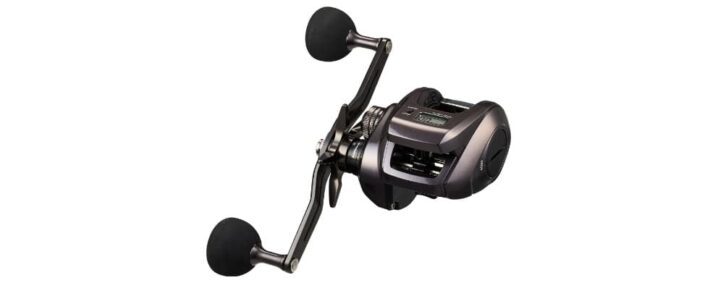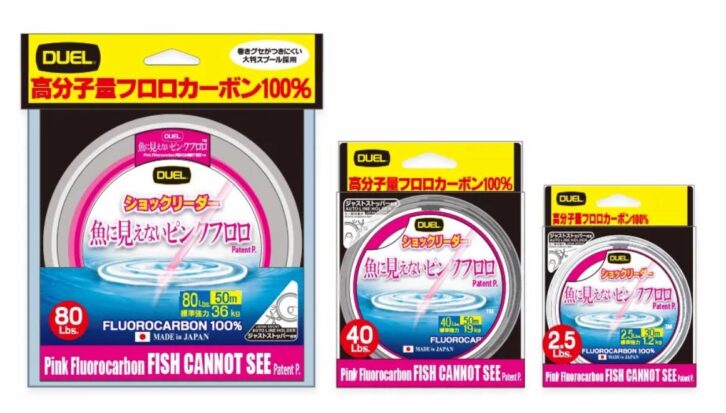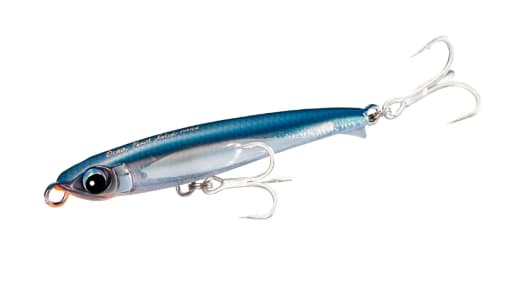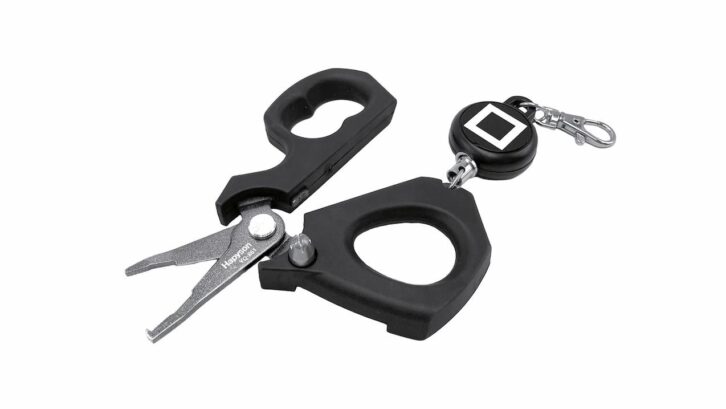Shimano NEW Snapper Rod for 2024
Responding to various fields and changing conditions Total of 5 types of NEW ENGETSU XTUNE
In the sea bream kingfish game, the best rod changes with different fields. Also, by using different rods depending on changing conditions even during a single day, anglers can get closer to catching fish. In 2024, the ENGETSU XTUNE was renewed and introduced. Two new types have been added to the lineup, for a total of 5 types and 17 models. The new series combines the cushioning and tenacity that are active in the sea bream rubbers feel throughout Japan.
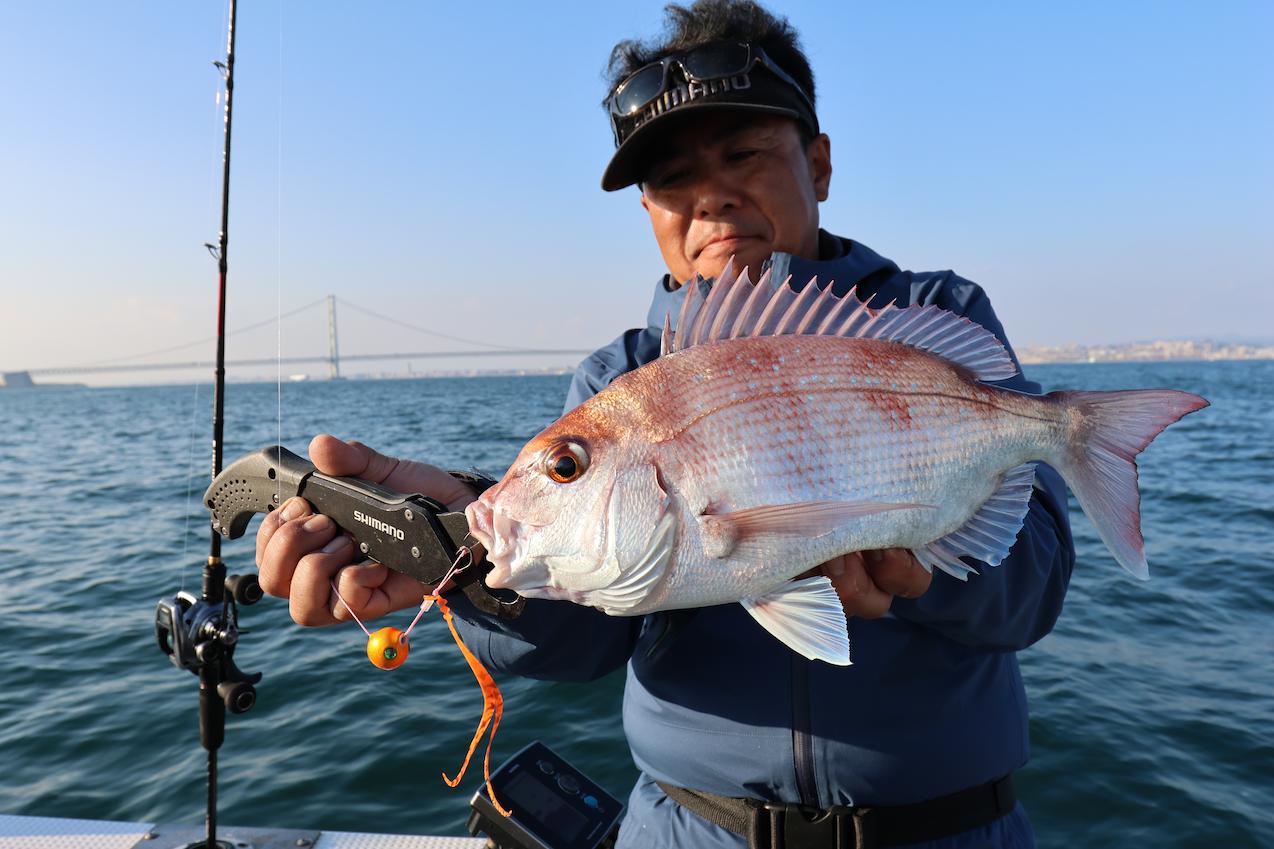

In the sea bream rubber field, different regions have different methods of attack and different sizes of fish caught, depending on the depth of the water, the speed of the tide, and the baits being preyed upon. Also, boats can be set up on the tide, or be running in the Doteras, depending on the area. The new XTUNE lineup is designed to meet the needs of these different fields.
INDEX
- A lineup that adjusts to various fields throughout Japan
- Mr. Akazawa’s favorite, the latest fully-tubed model
- Solid-tip model for severe conditions in fierce battle zones
- Full solid tip is lightweight and less prone to splattering.
- Casting model is designed to be more flexible!
- Deep doodlefish compatible & monster hunt doodlefish specs
A lineup that adjusts to various fields throughout Japan
In 2024, the ENGETSU XTUNE, one of Shimano’s snapper kingfish rods that is packed with Shimano rod technology and popular for its solid performance and ease of use, will appear with a new tone and new performance. We accompanied Mr. Yasuhiro Akazawa, a Shimano sea bream kingfish instructor who was involved in the development of the ENGETSU XTUNE, on a fishing trip and interviewed him about the performance of each model. The fishing trip took place off the coast of Akashi in Hyogo Prefecture, which is a fierce sea bream kingfish battleground, and on the Sea of Japan side of Hyogo Prefecture. At the time of the fishing trip, the rods were already in their final models after many tests had been repeated. He explained the process of fishing with the rods.
First of all, the new XTUNE lineup is designed to be used in the sea bream kingfish fields scattered all over Japan. The sea bream kingfish must respond to changes in depth and tide, as well as to the activity of the sea bream. In addition to the existing solid tip models (4 models for left and right hand), full solid models (8 models for left and right hand), and casting model (1 model for casting in shallow water), we have added a new tubular tip model (2 models for left and right hand) with a riding tone, and a new model with a riding tone (2 models for left and right hand) for use in the field of doterra fishing. In addition, we have added a tubular tip with a riding action (2 models for both left and right hand) and a dotella action (2 models for both left and right hand) for fishing in dotella fishing fields, for a total lineup of 17 models in 5 types. Each type of rod has been specially designed to be light, strong, and above all, easy to use. This series is a series that generously employs all of Shimano’s sea bream kingfish rod technology. We are sure that the right model will be found for every bream kingfish fishing enthusiast in every region.

The XTUNE’s extensive lineup is sure to find something to your liking.
Mr. Akazawa’s favorite, the latest fully-tubed model
When fishing in Akashi, Mr. Akazawa first picked up the N-B69ML-T model, which is his favorite among the new models. He said that this model fits perfectly with the sea bream kingfish style that he has been favoring recently.
The N-B69ML-T is a full-tubular model newly introduced in the Engetsu X-tune, and is my favorite model. This model has a ‘riding tone’ and is made of hollow full-tubular blanks from the tip to the rod end. The lightness and sensitivity of the full-tubular blanks are the most important characteristics of this model. The high sensitivity enables anglers to quickly grasp what is going on in the sea. For example, the sensitivity of the rod makes it easy to detect the tide line in the water where snapper often prey on baits, and the tracking of snapper during retrieve and fall. The tip has an exquisite tension, so when the sea bream bait hits the bottom, the tip returns sharply with a “snap”. This movement can be felt by the angler’s hand. Of course, it also has perfect eye sensitivity. This prevents the lure from being caught by roots at points with rough roots and fast tides, and also allows for a quick retrieve after the sea bream kingfish has hit the bottom, which is important in the sea bream kingfish game in more severe conditions. The new model, however, has achieved a tip that is easy to bite even with a tubular rod and does not cause any discomfort to sea bream, thanks to the evolution of Shimano’s rod technology. Recently, I like to set the drag a little stronger, keep reeling for a while after a bite starts to appear, and then give an angler a “snap” when the bite starts to come in. This gives me a better feeling of having hooked a fish, and it feels good. And, by hooking the fish firmly, there is less chance of the fish falling apart. This tubular model is perfect for such fishing. I think this is a rod that experts can enjoy.
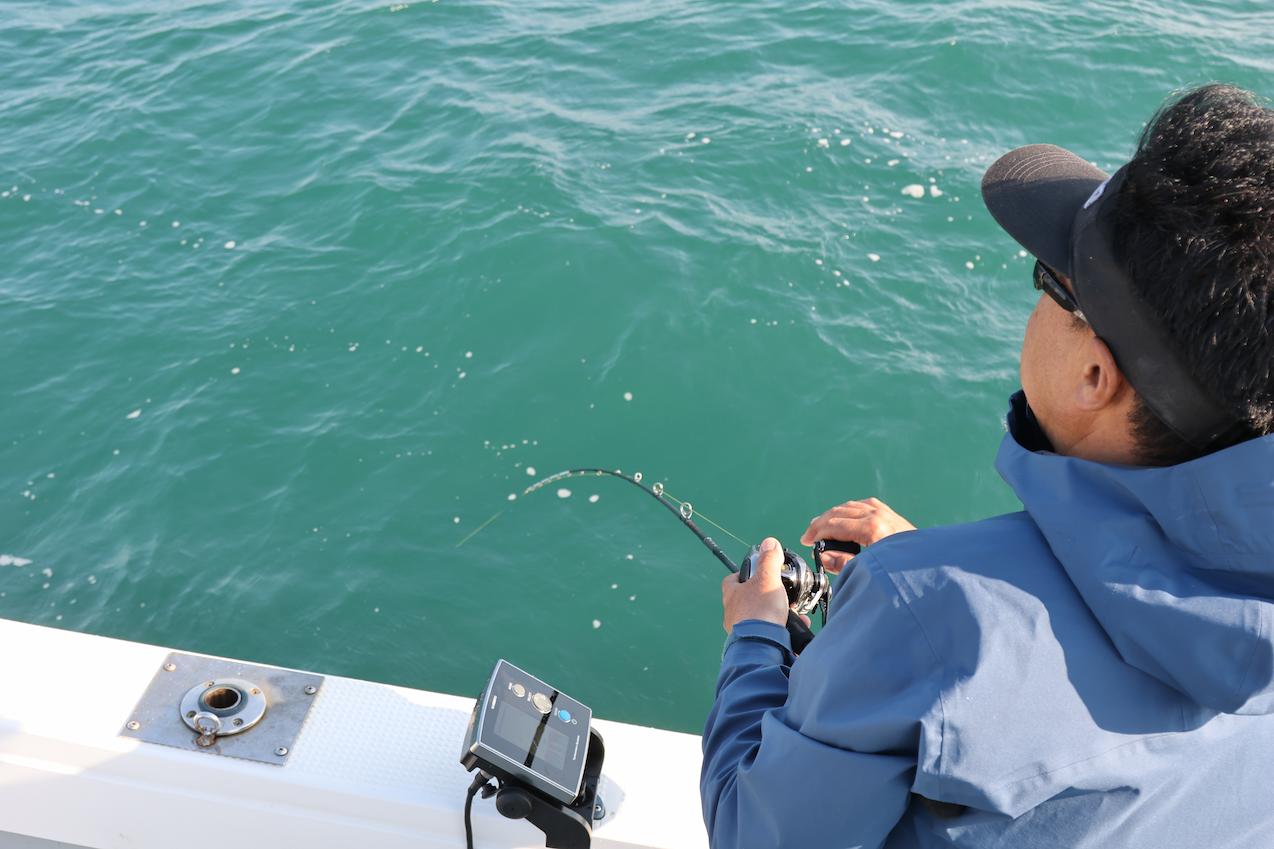
Of all the rods in the lineup, Akazawa’s favorite is the fully tubular model. Its structure makes it easy to catch the slightest bite of a sea bream and also to grasp what is going on in the water. The tubular tip is not bouncy, but has a delicate tip that makes the sea bream bite firmly.
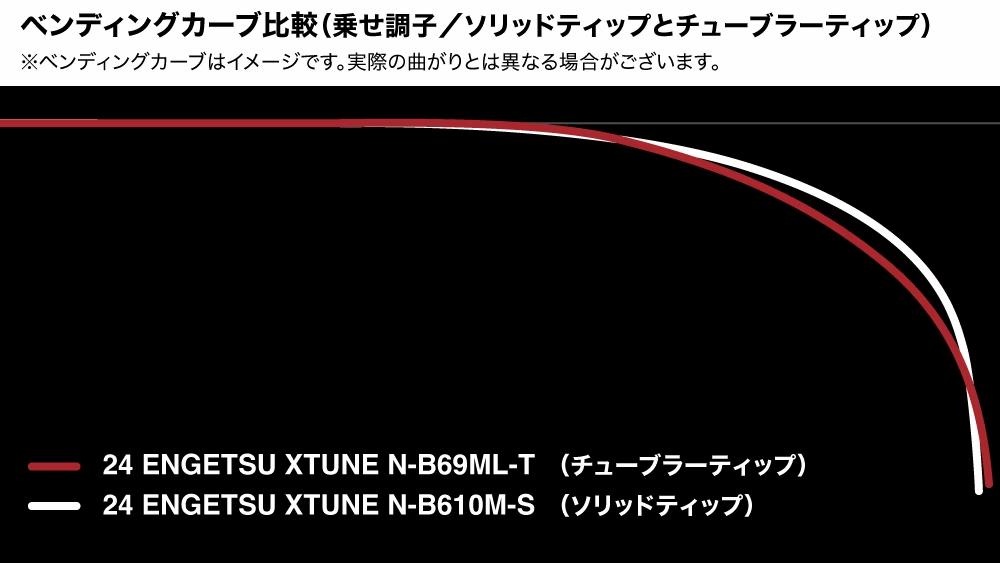
Tubular tip model: Tough fishing with a highly sensitive tip and a flexible belly.
The tubular tip model Engetsu Xtune N-B69ML-T is a lightweight, high-sensitivity rod with a taut, flexible blank that makes it easy to grasp what is going on in the water, allowing anglers to attack the bottom of reefs in windy conditions or when the reefs are rough.
Solid-tip model for severe conditions in fierce battle zones
Mr. Akazawa, who had been fishing for a while that day, changed his rod from a full solid model to a solid tip model because the bites were far away. At that time, the water temperature in Akashi had dropped a few days earlier, and the snapper bite had been poor for several days. The fish were responding, but they were not using their mouths properly. So, we switched to a solid tip that would make it easier to bring short bites to the hook.
The XTUNE solid tip model is available in two models, the N-B610ML-S and N-B610M-S (four models in light and left hand). These two models are the most user-friendly standard models in the series. The delicate and slender solid tip quickly responds to the biting of a red sea bream, allowing even inactive red sea bream to get on the hook, and the moderately taut body makes it possible to hook the fish firmly by giving a follow-up hooking action. The butt power also allows the angler to have enough time to deal with large snapper. The new solid tip model is slightly sharper than the previous model. This sharpness does not mean that it is hard and strong, but rather that it has become more tenacious. You will be able to feel this when you use it. The biggest feature of this model is that it is designed to be truly light. The “true lightness” is not only the lightness of the reel’s own weight, but was also achieved with the aim of optimizing the weight of the reel when actually fishing. When you actually hold the reel in the field with it attached, you will be able to feel how “light” it is. This makes it possible to wind the reel at a more stable constant speed and to detect slight changes in the water and bites during retrieve.

The delicate, slim solid tip responds quickly to the bite of the snapper and allows the angler to ride the bite of the snapper when it is inactive. This model gives the impression of being sharper than the previous model. It is also designed to be balanced to feel light when held.

Delicate and slender solid tip firmly catches the bite of small sea bream.
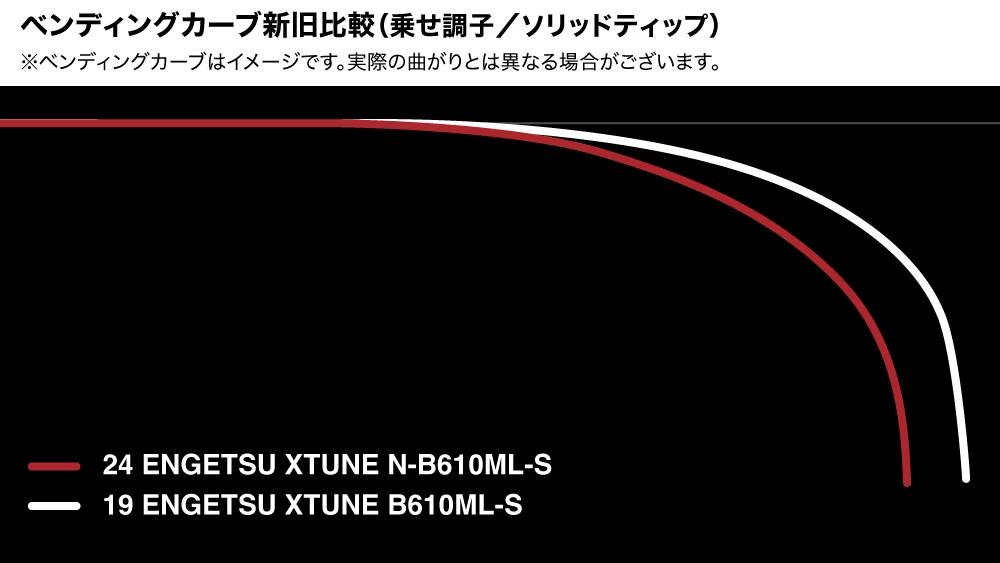
Ride / Solid tip: Supple tone with “true lightness
N-B610ML-S/M-S: A sea bream kingfish rod with a ride tone and solid tip, pursuing “true lightness”. The delicate solid tip automatically catches sea bream, and the rod is also equipped with a manual element that allows anglers to follow up with a strong hook and hook. This is a model for all-rounder anglers.
Full solid tip is lightweight and less prone to splattering.
Mr. Akazawa, in the midst of severe conditions, catches the slightest contact from a red sea bream and hangs it up. However, the size of the fish did not appear. So the captain took the boat to a point on the east side of the Akashi Bridge where large and good-sized sea bream could be expected. This point is a place where the current is strong depending on the time of day. The captain searched for the best timing before the tide started to run. It is said that large and good-sized red sea bream often take a bite when the tide starts to move. However, the time is short. It is necessary to search more intensively.
Here, Mr. Akazawa picked up the full solid N-B70M+-FS.
The N-B70M+-FS is long enough to absorb the ups and downs of the boat caused by waves with its effective bending range. It also handles the line angle as it enters the bottom of the boat. With a short rod, the tip part of the blank, which catches fine bites, may be killed by the rod’s bending, but a 70 long rod can handle it well. Moreover, because it is a full solid rod, it has the performance to bring the angler to the hooking point naturally.
Incidentally, the full solid models N-B510ML-FS, N-B66ML-FS, and N-B66M-FS are also available, and each of them has its own useful situation.
The N-B510ML-FS and N-B66ML-FS are best suited for vertical sea bream rubbers dropped in shallow water, while the N-B66M-FS and the N-B70M+-FS, which I am holding in my hand, are easier to use in areas with fast currents. Of the two, the N-B66M-FS will be easier to use in a variety of areas.”
The common feature of the new full solid model is that it feels lighter in the hand than the previous model.
The full-solid rod tends to be heavier than the previous model, but the new model feels lighter than the previous one. This is because we pursued the suppleness of the rod, and as a result, the weight of the rod is light and the fulcrum for bending is in front of the rod. Also, each model is more supple than the previous model, making it easier to catch short bites. The bend of the lure also makes it less prone to splashes.

The full solid rod bends as a whole, which reduces the chance of rods falling apart. The new models are more supple, which makes it easier to catch short bites.

Full solid: Catch fish by bending the entire rod, full bend with full solid.
The N-B510ML-FS and B70M+-FS models feature a high-power X full solid construction for incredible cushioning and tenacity. With unimaginable cushioning and tenacity from the slender blanks, these models are “put it on, bend it, and catch it” models. Fully automatic and exciting fighting can be enjoyed.
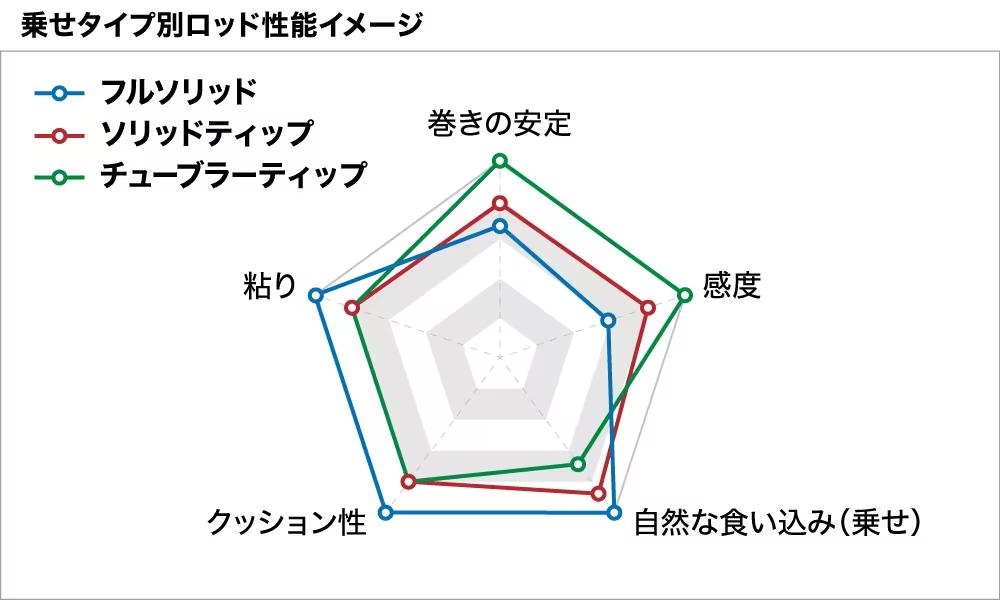
XTUNE is available in three different riding styles: full tubular tip, solid tip, and full solid tip. The tubular tip offers excellent sensitivity and reeling stability, and can be used for bottom fishing in tough conditions. Solid tip, the king of sea bream rubber rods, with above-average performance in all categories Full solid tip with tenacity, cushioning, and a natural bite that lets anglers “ride it, bend it, and catch it. Each of these three unique riding styles can be used in a wide variety of fields and conditions.
Casting model is designed to be more flexible!
On this day in Akashi, reactions of red sea bream were seen in relatively deep water. The reaction was not only at the bottom, but often in the middle layer as well, and this middle layer reaction was a reaction of chasing whitebait. Mr. Akazawa was checking for such schools with the search-and-see marlin as he attacked the area. As a result, he did not catch any extra-large ones, but he did catch a few red sea breams one by one. Toward the end of the day, the captain said the response was thin, but they tried fishing in shallow water. This is where the spinning casting model comes into its own. As soon as he entered the point, Mr. Akazawa cast the sea bream king mackerel to search a wide area.
The C-S66ML+-S has been lined up as a casting model that allows anglers to cast the sea bream rubba and attack large, untouched areas. 6 feet 6 inches long, which is easy to cast from a passenger boat. This casting model was the M model in the previous XTUNE, but this time it uses ML+ power. This power setting makes it more supple while maintaining the casting feel. The slim and supple solid tip provides good bite, and the tip and belly are also supple. This allows anglers to naturally catch even red sea bream that have not been able to catch until now. The butt is not too soft, but firm enough to hook the snapper firmly in the mouth. It also has the ability to follow the snapper’s thrust during the fight. This performance makes it suitable not only for shallow areas but also for vertical spinning.
In shallow water, the snapper of the wappen class hit the sea bream as if they were playing with the sea bream rubbers. However, the C-S66ML+-S showed its ability to keep up with such bites.
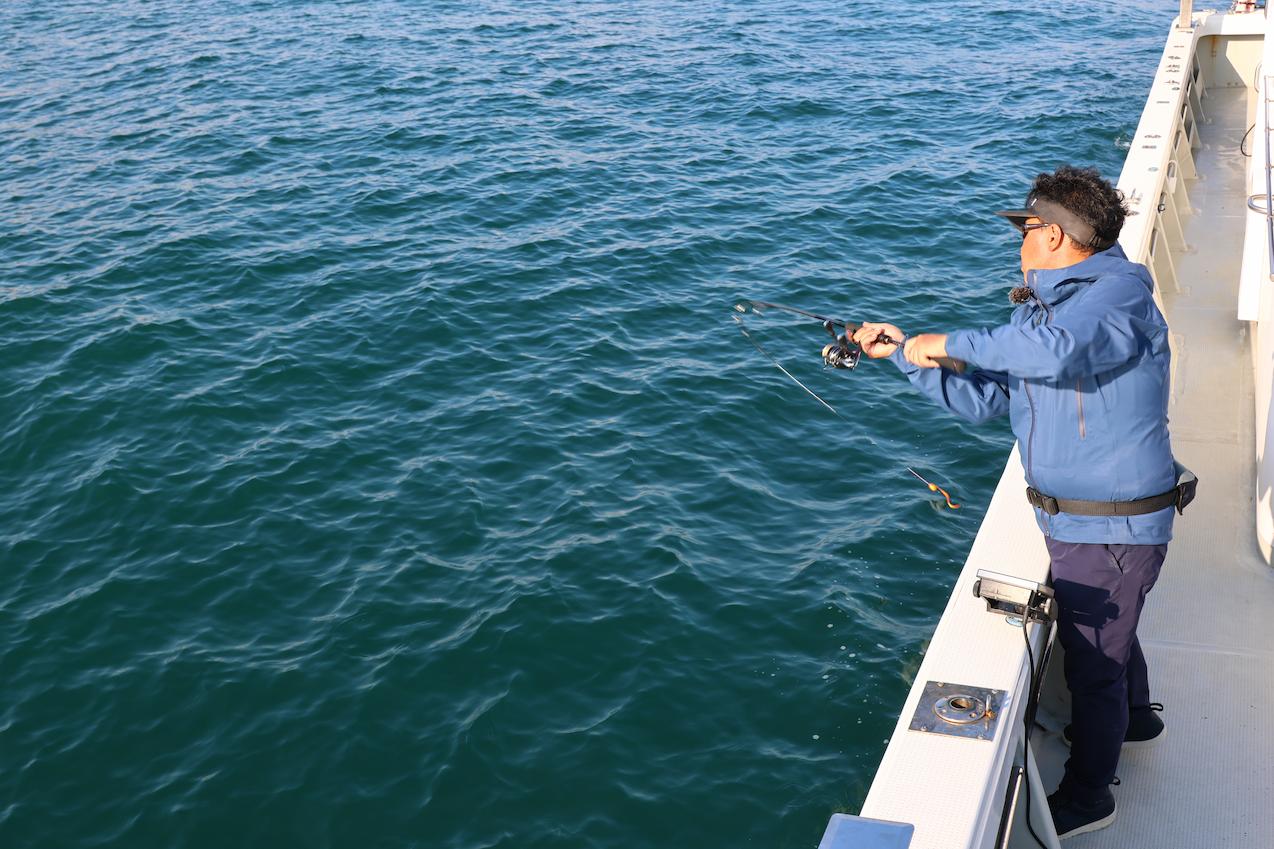
The spinning type casting model has also evolved. This time, the ML+ power is more supple than the previous model. It is easier to catch more detailed bites. However, the butt is firm, so it can handle vertical sea bream rubbers and large-sized hits.
Deep doodlefish compatible & monster hunt doodlefish specs
About a month after his fishing trip in Akashi, Mr. Akazawa was sailing on the Sea of Japan side of Hyogo Prefecture. In fields from Kinko Bay in Kagoshima to Genkainada, San-in region, Fukui, Tango, Niigata, and Akita, there is a sea bream kingfish game called “deep doterra” as well as attacking with doterra current. In the case of regular doterra, the head used is 120g or 150g, but in the case of deep doterra, a head of 200g or 250g is used. The D-B611M+-T, the newest addition to the XTUNE lineup, is designed to handle such sea bream rubbers.
The D-B611M+-T is the newest addition to the XTUNE lineup, and is designed to be used for both the Doterra and Deep Sea Bream Rabba games. The rod required for dotella sea bream rubba and deep sea bream rubba must be flexible enough to handle the bite of sea bream, and must be able to handle the weight of the sea bream rubba, the load of the paid out line, and the load when a sea bream hits the rod. The D-B611M+-T is equipped with these features.
When using dotella sea bream rubbers, especially when attacking deep water, a rod like a flexible full solid will bend over to the extreme. Therefore, in order to pull in the snapper, the rod and line must be in a straight line, and the drag must be increased to pull in the snapper. However, this increases the probability of the line breaking apart, and sometimes the line will break. Therefore, the D-B611M+-T has been perfected as a model with a flexible tip that bites well and does not bounce, and cushioning that absorbs the movement of the snapper during the fight, while the rod is strong enough to firmly catch the snapper under a heavy load and bend the rod to pull the snapper in when it hits. The model is also equipped with a flexible tip that does not bounce easily and absorbs the movement of the sea bream during the fight.
In a word, it is a “supple and tenacious” rod. The full tubular construction makes it lightweight, and the sensitivity is excellent when the sea bream mackerel is far away from the rod. It is also very sensitive when the sea bream is far away from the lure, so you can feel the tide line when the lure is on the bottom or in the fall, a short bite, or a bite before the sea bream comes close to the lure. Incidentally, we caught many good-sized sea bream during our tests.
In fact, during the time of the interview, the moderately supple performance of the lure prevented it from breaking apart, and the tenacity of the lure allowed the angler to catch an 85-cm large snapper without difficulty. Furthermore, in mid-November on the Sea of Japan side of Hyogo Prefecture, there were reactions of walleye and yellowtail at the points where sea bream rubbers were used, and as expected, they were hitting. The fish were fighting with confidence even when the camera was pointed at them, giving the impression of a dependable model.

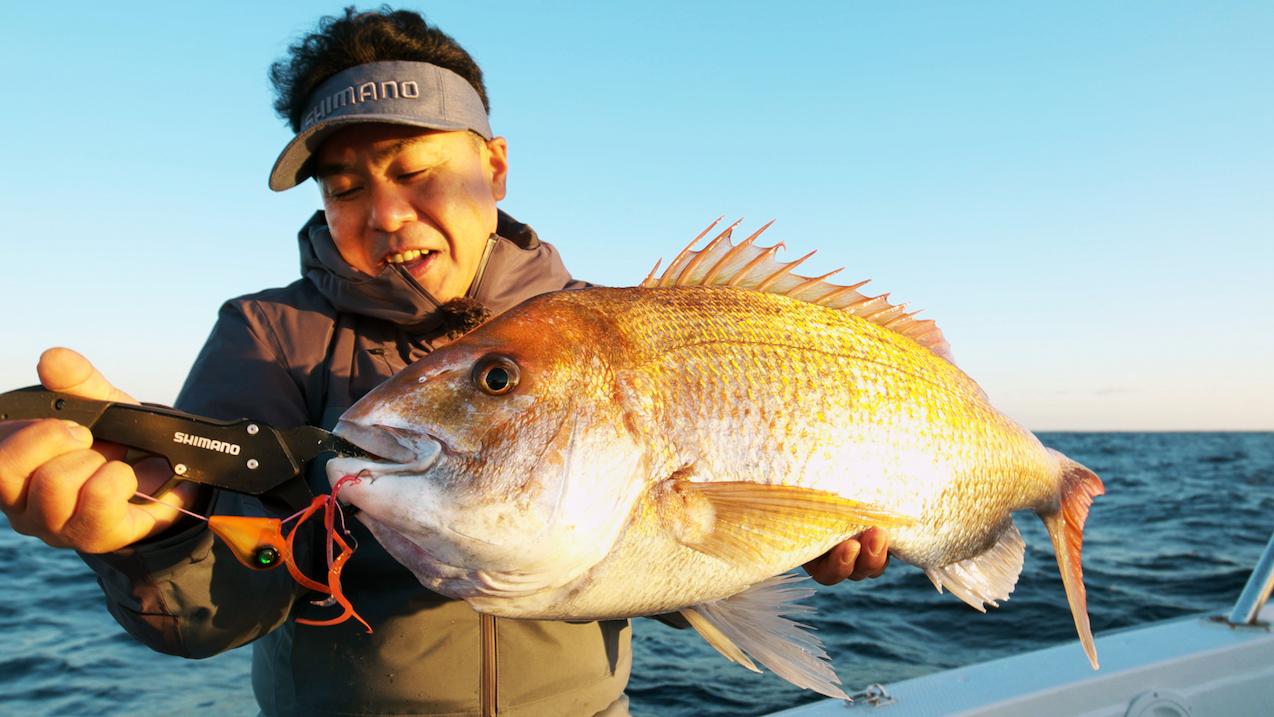
This year’s model lineup also includes a model that is compatible with the Doterra. The rod is strong enough to catch a big sea bream even under a heavy load in fast current and strong wind, and to bend the rod to pull in a big sea bream that has hit. The rod is not only strong, but also has a flexible tip that bites well and does not bounce, and cushioning that absorbs the movement of the snapper during the fight. During the test, we caught a good-sized snapper during the interview, proving the rod’s ability.
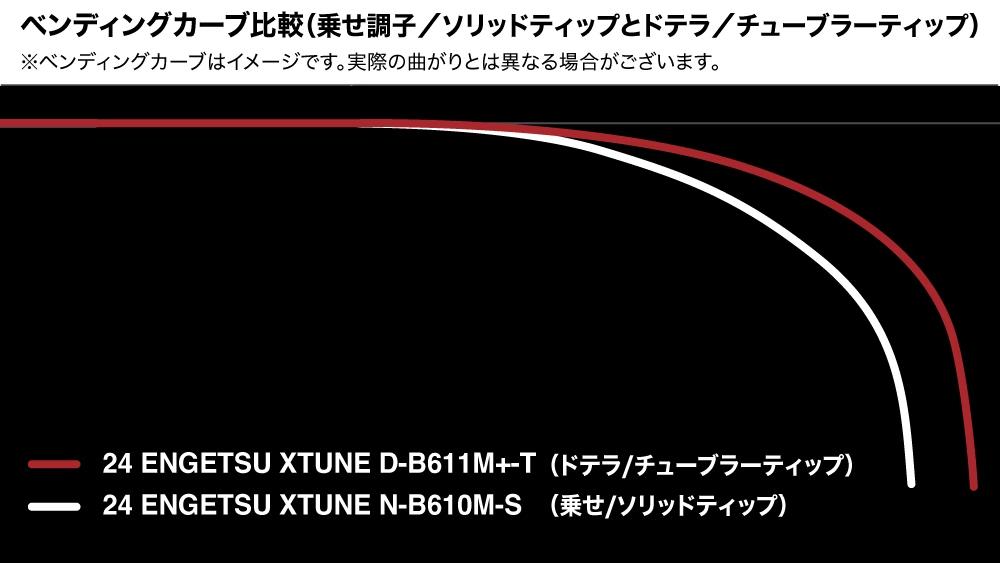
Doterra special with power throughout the rod
D-B611M+-T is equipped with power and tenacity to function as a whole rod, from the taut tubular tip to the butt, enabling anglers to hook fish accurately even when they are far away from the fish and the line is let out in a dotted line. It is capable of pulling in big sea bream with strong pull, fighting with current and wind resistance, and pulling in bluefish with light pumping.
At the beginning of the interview, Mr. Akazawa said, “This XTUNE lineup can be used in sea bream kingfish fields scattered all over Japan,” and I realized that there were enough variations to convince me through his explanation during the actual fishing. There are sea bream kingfish fields all over Japan, and we are sure that one of the models will be just right for them. We are sure that the fans of sea bream kingfish will be able to find a model to their liking in each area.
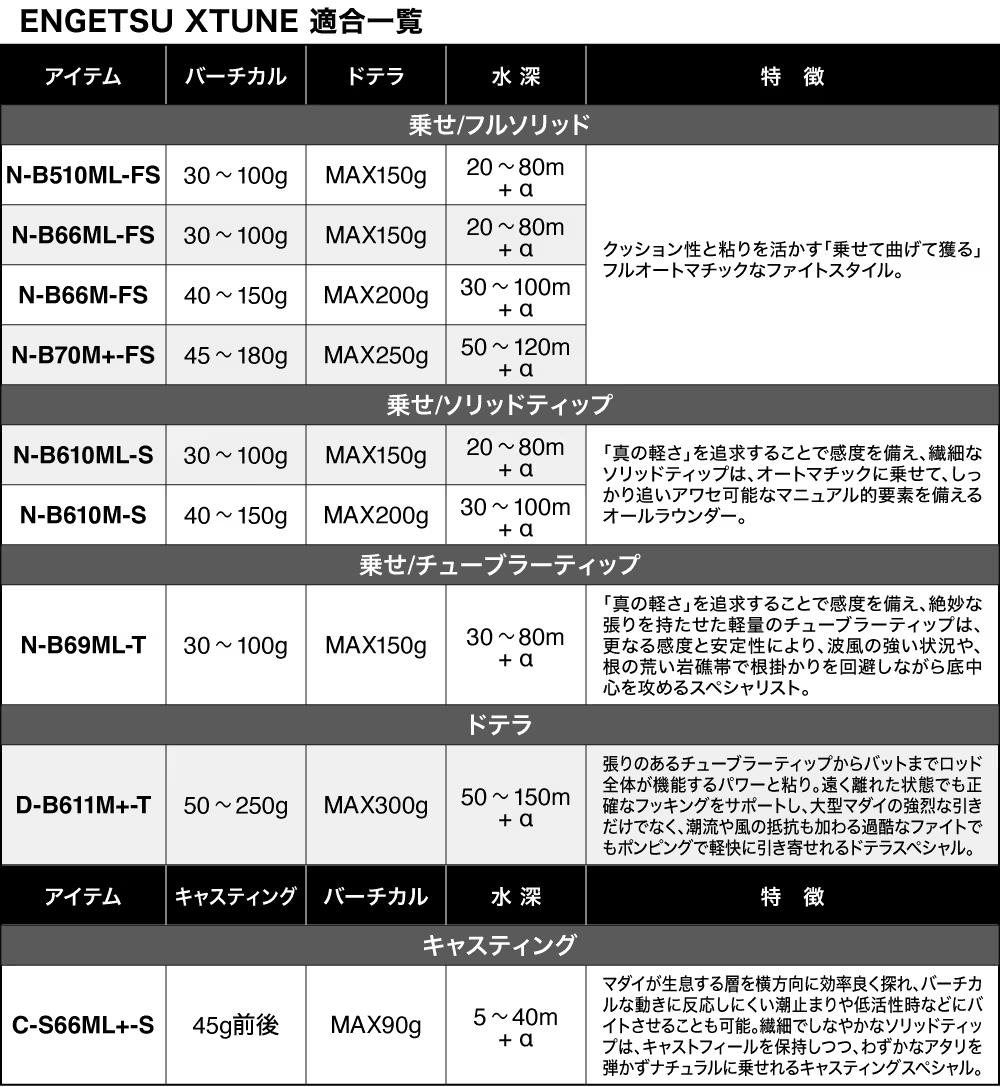


All models feature Shimano’s unique X-Sheet Extreme Gun Grip. The X-Sheet Xtreme Gun Grip allows anglers to grip the lure firmly without any gaps by simply placing it in the palm of the hand and keeping the wrist angle straight, which reduces fatigue and stabilizes the hand, making constant velocity reeling easier and more precise.
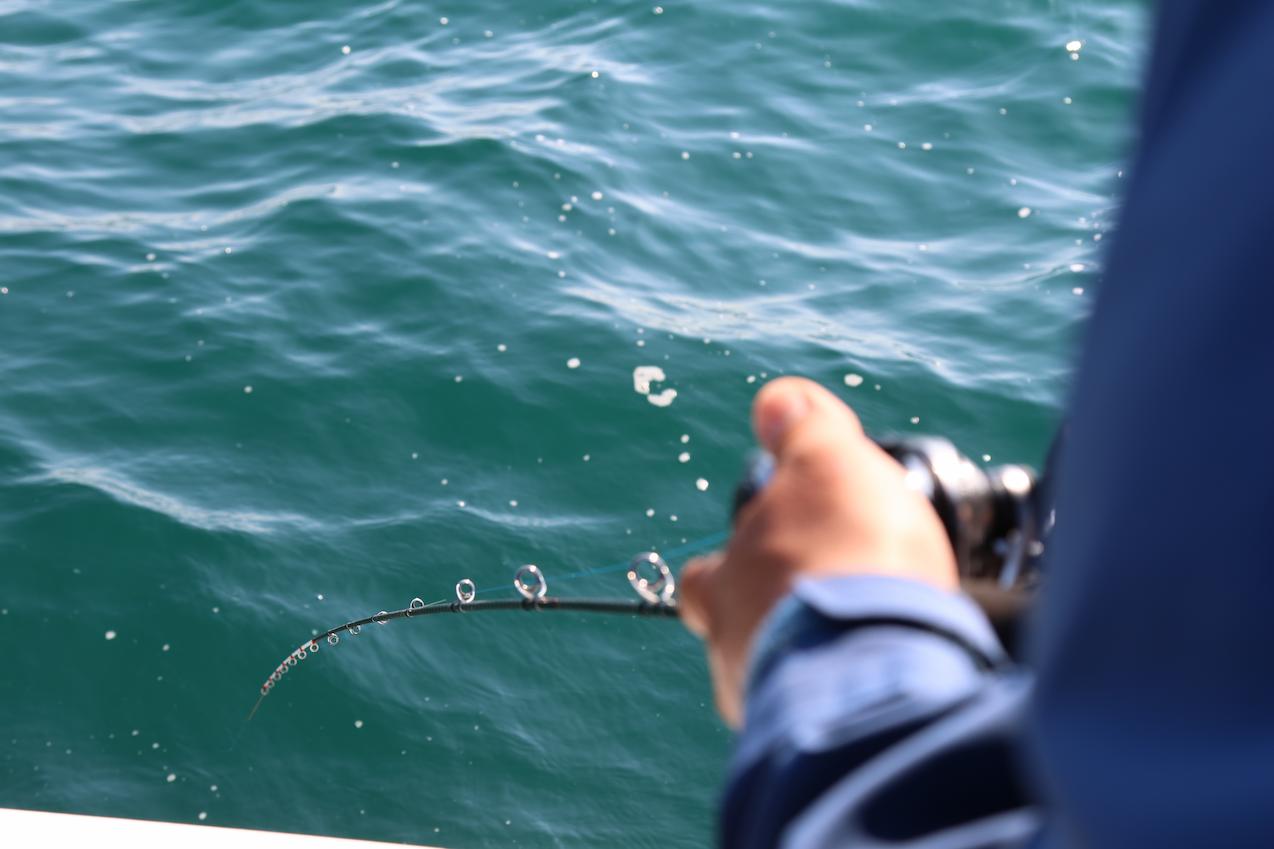
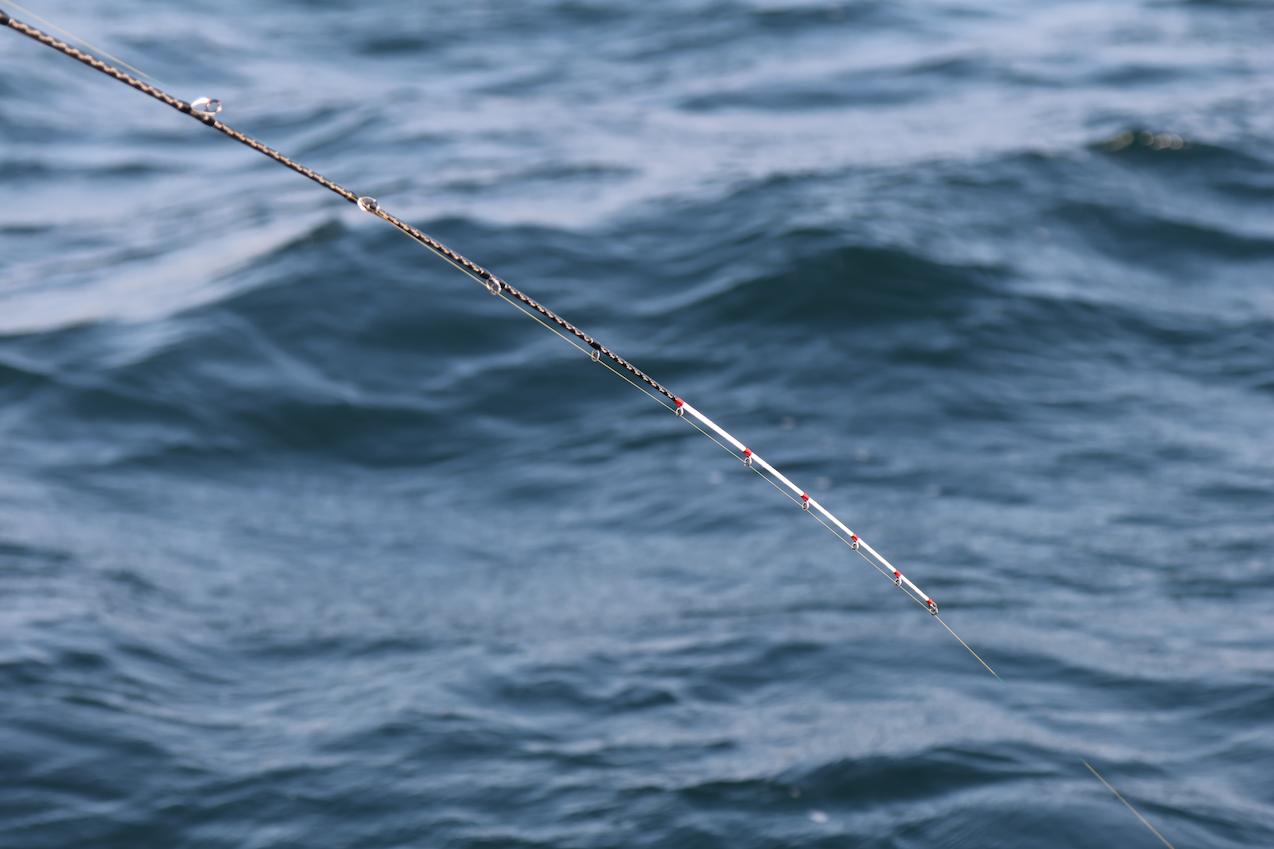
The large-diameter guide is designed to prevent reeling from being interfered with even when jellyfish or other fish are entangled in the line. The spiral guide design makes it easier to reel at a constant speed and reduces line trouble. This allows for stress-free sea bream mackerel fishing.





